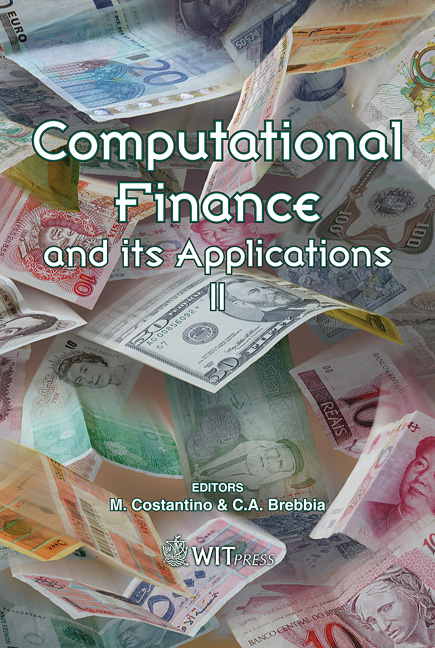Dynamics Of The Top Of The Order Book In A Global FX Spot Market
Price
Free (open access)
Transaction
Volume
43
Pages
10
Published
2006
Size
442 kb
Paper DOI
10.2495/CF060251
Copyright
WIT Press
Author(s)
E. Howorka & A. B. Schmidt
Abstract
The order lifetime at the top of the order book is defined as the time between the order arrival at the top of the order book and its removal from the top of the order book. In this work, the average order lifetime in the EBS FX spot market is analyzed for two corresponding four-week periods in 2004 and 2005. The following currency pairs, EUR/USD, USD/JPY, USD/CHF, EUR/JPY, and EUR/CHF, are considered during the most liquid period of the working day, 7:00 – 17:00 GMT. Generally, the distribution of orders with a given lifetime at the top of the order book decays exponentially at short times. However, this decay follows a power law at longer time periods. The crossover times between the two decay forms are estimated. It is shown that the decays have steepened and the order lifetime has become shorter in 2005. In particular, 47.9% of the EUR/USD orders and 34.7% of the USD/JPY orders live less than one second on the top of the order book. Two possible causes of the power-law asymptote are indicated: orders with amounts significantly higher than the average value and the specifics of credit relations among the EBS customers. The only exclusion from the described pattern is the order dynamics of EUR/CHF in 2005 that does not have an exponential decay. Keywords: high-frequency FX market, order lifetime. 1 Introduction The global inter-bank FX spot market has dramatically changed since early 1990s when the electronic broking systems were introduced. Before that, a trader could either contact another trader directly (using telephone or a Reuters electronic system 2000) or trade via \“voice brokers” who were collecting and matching the bid and offer orders over dedicated telephone lines. The electronic
Keywords
high-frequency FX market, order lifetime.





